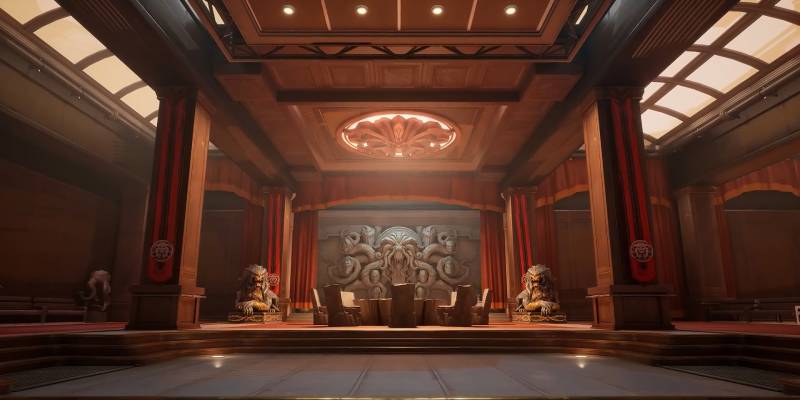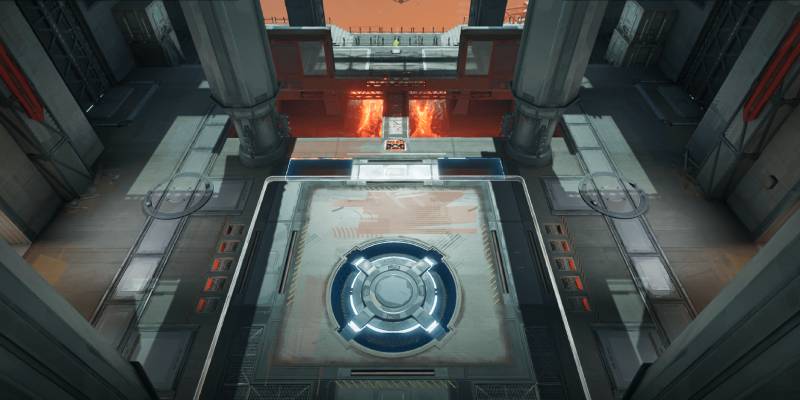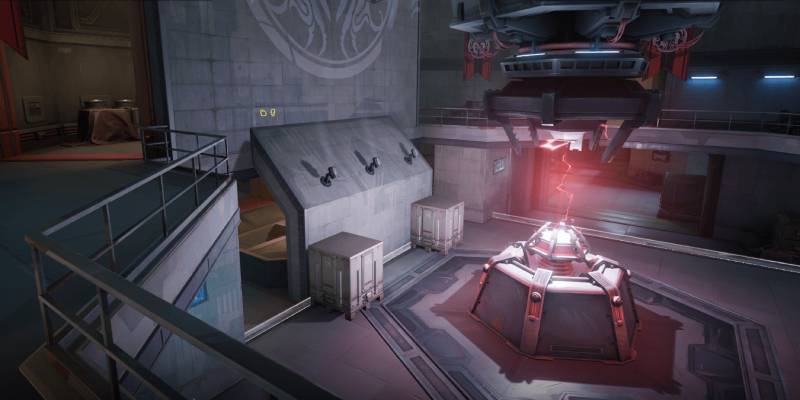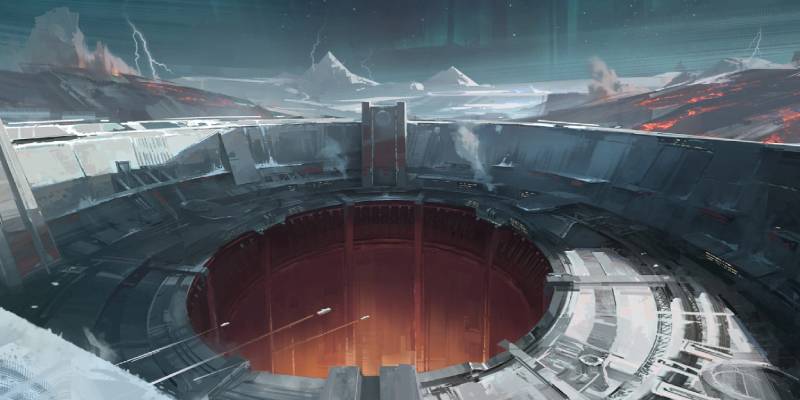Deep beneath the frozen wasteland of Antarctica lies one of Hydra's most sinister installations. For decades, this malevolent organization has remained dormant, concealing their twisted ambitions while the world above descended into chaos. Now, as reality itself begins to fracture and timelines collapse, Hydra emerges from the shadows to exploit the temporal instability for their own dark purposes.
Within the depths of Charteris Base, Hydra has successfully reactivated an ancient gateway—a portal to their otherworldly deity that has slumbered for eons. The catalyst for this awakening is a mysterious crystal, forged from pure chronal energy and capable of bridging dimensions. As the ancient Hive entity draws closer from beyond the veil of reality, Hydra's scientists work tirelessly to harness its alien power, channeling it into the creation of an unstoppable army of enhanced super-soldiers.
"This ancient cult now stands ready to welcome all timelines into their alien chorus of conquest. The question remains: are the heroes of Earth truly prepared to face the regenerating menace of Hydra's many heads?"

Map Classification and Structure
Hell's Heaven operates as a Domination-style battlefield, presenting players with a unique tri-stage experience. While all three distinct combat zones share the same thematic elements and visual design, each arena offers completely different tactical challenges and strategic opportunities. The map's innovative design ensures that teams must adapt their approach and composition multiple times throughout a single match, making versatility and quick thinking essential for victory.
Stage One: Super-Soldier Factory
Environmental Overview
The first combat zone takes place within Hydra's experimental super-soldier production facility, a technologically advanced laboratory characterized by constantly shifting mechanical walls and a massive pool of molten lava that dominates the center of the arena. This dynamic environment creates both opportunities and dangers, as the moving architecture can provide cover or block escape routes depending on timing, while the lava pit serves as a lethal environmental hazard that skilled players can weaponize against their opponents.

Route Analysis and Navigation
Understanding the five primary pathways through this stage is essential for effective team coordination and individual positioning. Each route offers distinct advantages and should be selected based on your hero's capabilities, team composition, and current battlefield conditions.
| Route | Color Code | Tactical Advantage | Best For |
|---|---|---|---|
| Primary Pathway | Blue Route | Direct access, predictable | Coordinated team pushes |
| Elevated Northern | Red Route | High ground, sightlines | Long-range heroes, dive tactics |
| Secondary Elevated | Yellow Route | Support positioning, doorway access | Support heroes, flanking |
| Lower Flanking | Green Route | Stealth approach, surprise | Flanking heroes, stealth tactics |
| Alternative Access | Teal Path | Flexibility, escape route | Repositioning, emergencies |
Environmental Hazard Utilization
The central lava pit represents more than just an environmental obstacle—it's a powerful tool for heroes with displacement abilities. Characters like Spider-Man can use web-pulling abilities to drag opponents off the objective and into the molten death below, while Invisible Woman's force push capabilities can send enemies plummeting to their doom. Understanding how to utilize this environmental hazard can turn the tide of battles and create spectacular elimination opportunities.
The bridge connecting the green route to the objective area provides an excellent choke point for both offensive and defensive strategies. Teams can use this narrow crossing to funnel enemies into kill zones or establish strong defensive positions that are difficult to break without coordinated team efforts.
Stage Two: Frozen Airfield
Environmental Characteristics
The second stage transports the battle to an outdoor airfield installation, where the harsh Antarctic conditions have frozen the landscape into a tactical playground of elevated platforms, destructible barriers, and multi-level structures. This environment emphasizes vertical mobility and strategic positioning, with jump pads and breakable walls creating dynamic pathways that can be modified during combat.

Comprehensive Route System
The frozen airfield presents a more complex navigation system than the factory, with six distinct pathway options that can be combined and modified through environmental interaction.
Map Transformation Mechanics
The frozen airfield features one of the most dramatic transformation sequences in Hell's Heaven. During the battle, the entire objective area slides down the map into the central flanking room, completely altering the tactical landscape. This transformation breaks down protective barriers and opens new pathways, fundamentally changing how teams must approach both offensive and defensive strategies.
Advanced Tactical Considerations
The breakable wall mechanism that provides access to the green route represents a crucial tactical decision point. Teams must weigh the benefits of revealing this pathway against the potential for enemies to use the same route against them. The timing of when to break through this barrier can significantly impact the flow of battle and should be coordinated with team strategy.
The jump pad systems throughout this stage create vertical mobility options that can dramatically alter engagement patterns. Heroes with limited natural mobility can use these systems to access elevated positions typically reserved for more mobile characters, while naturally agile heroes can use them to create unpredictable movement patterns that confuse enemies.
Stage Three: Eldritch Monument
Unique Environmental Features
The final stage of Hell's Heaven introduces the most vertically complex battlefield of the three areas, centered around an ancient monument that serves as both the primary objective and a massive environmental feature. This stage emphasizes three-dimensional combat more than any other area, with extensive vertical pathways, aerial approaches, and elevation changes that can dramatically impact engagement outcomes.
.jpg)
Complex Route Network
The eldritch monument stage presents the most sophisticated pathway system in Hell's Heaven, with six distinct routes that offer varying degrees of risk and reward.
Route Priority System
Prioritize routes based on your hero's mobility capabilities and team coordination level.
Monument Transformation System
The eldritch monument features the most complex transformation mechanics in Hell's Heaven, with multiple elevation changes that occur at different times throughout the battle. Unlike the single transformations in other stages, this area's objective can rise and fall multiple times, creating constantly changing tactical conditions.
Advanced Environmental Interactions
The transformation mechanics interact uniquely with certain hero abilities, creating tactical opportunities and limitations that experienced players can exploit. Most notably, Cloak and Dagger's ultimate ability becomes ineffective when the objective rises, as the ability field does not move with the platform. This creates opportunities for enemies to pressure opponents who believe they are protected within the ultimate's area of effect.
The elevation changes also impact sight lines and engagement ranges dramatically. Positions that provide excellent overwatch when the objective is lowered may become ineffective or even disadvantageous when the platform rises. Teams must constantly adapt their positioning and strategy based on the current elevation state of the objective.
Vertical Combat Mastery
Success on the eldritch monument stage requires mastering three-dimensional combat concepts that may not be as crucial in other areas of Hell's Heaven. Understanding how to utilize vertical space for both offensive and defensive purposes becomes essential for consistent victory.
The monument's structure creates multiple levels of engagement, from ground-level brawls around the base to aerial duels high above the battlefield. Teams must coordinate across these different elevation zones while maintaining awareness of how the transformation mechanics will impact their positioning.
- Superior sight lines and positioning
- Multiple escape route options
- Dive attack opportunities
- Control over engagement timing
- Exposed to attacks from multiple angles
- Limited cover options
- Vulnerability during repositioning
- Dependency on mobility abilities
Strategic Mastery and Advanced Tactics
Cross-Stage Adaptation
Success in Hell's Heaven requires more than mastering individual stages—teams must demonstrate the ability to adapt their composition and strategy as the map progresses through its three distinct phases. Heroes who excel in the factory's close-quarters combat may struggle in the airfield's open areas, while characters optimized for the airfield's elevation game might find the monument's extreme verticality challenging.
The most successful teams maintain flexibility in their approach, with players capable of adjusting their playstyle and positioning based on the unique demands of each stage. This adaptability extends beyond individual skill to encompass team coordination, communication, and strategic planning.
Environmental Hazard Integration
Each stage of Hell's Heaven presents unique environmental hazards and features that can be weaponized by skilled players. From the factory's lava pit to the airfield's breakable walls and the monument's extreme elevation changes, understanding how to utilize these features can provide significant tactical advantages.
Transformation Timing and Positioning
The transformation mechanics that define each stage of Hell's Heaven create crucial decision points that can determine the outcome of battles. Teams must learn to anticipate these changes and position themselves advantageously before they occur.
Understanding the timing of transformations allows teams to coordinate pushes and retreats more effectively, using the changing battlefield conditions to their advantage while denying enemies the same opportunities.

Conclusion
Hydra Charteris Base: Hell's Heaven represents one of Marvel Rivals' most complex and dynamic battlefields, demanding mastery of multiple distinct combat environments within a single match. Success requires not only individual skill and hero mastery but also deep understanding of environmental mechanics, route optimization, and adaptive team strategy.
The three-stage progression from the factory's mechanical hazards through the airfield's elevation challenges to the monument's extreme verticality creates a comprehensive test of player ability and team coordination. Teams that invest time in mastering each stage's unique characteristics while developing the flexibility to adapt between them will find themselves with significant competitive advantages.
"Remember that Hell's Heaven rewards preparation, coordination, and adaptability above all else. Use this guide as a foundation for developing your own tactical approaches, and always remain ready to modify your strategy based on the ever-changing conditions of this dynamic battlefield."
Master the routes, exploit the transformations, and embrace the chaos of Hydra's domain. Victory awaits those bold enough to face the many heads of Hydra and emerge triumphant from Hell's Heaven.
